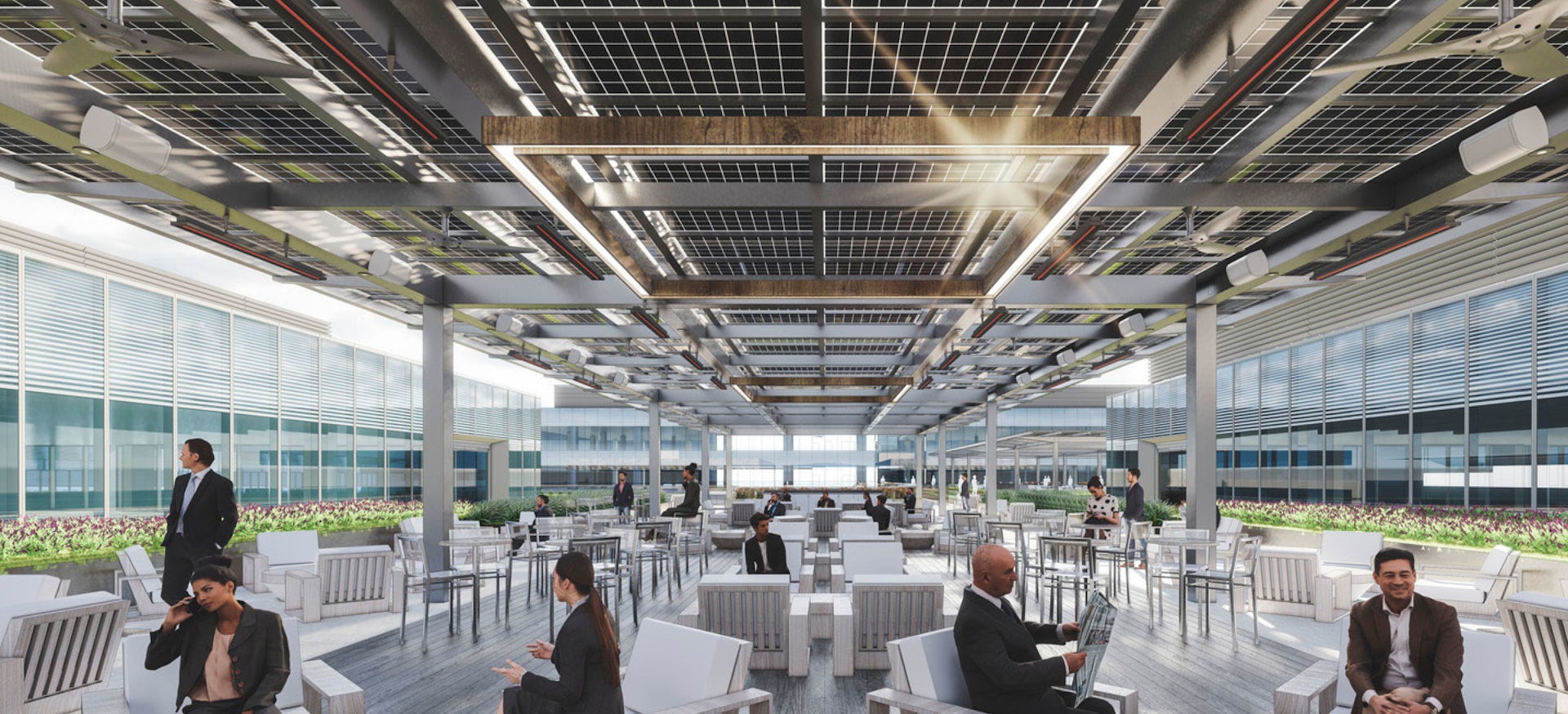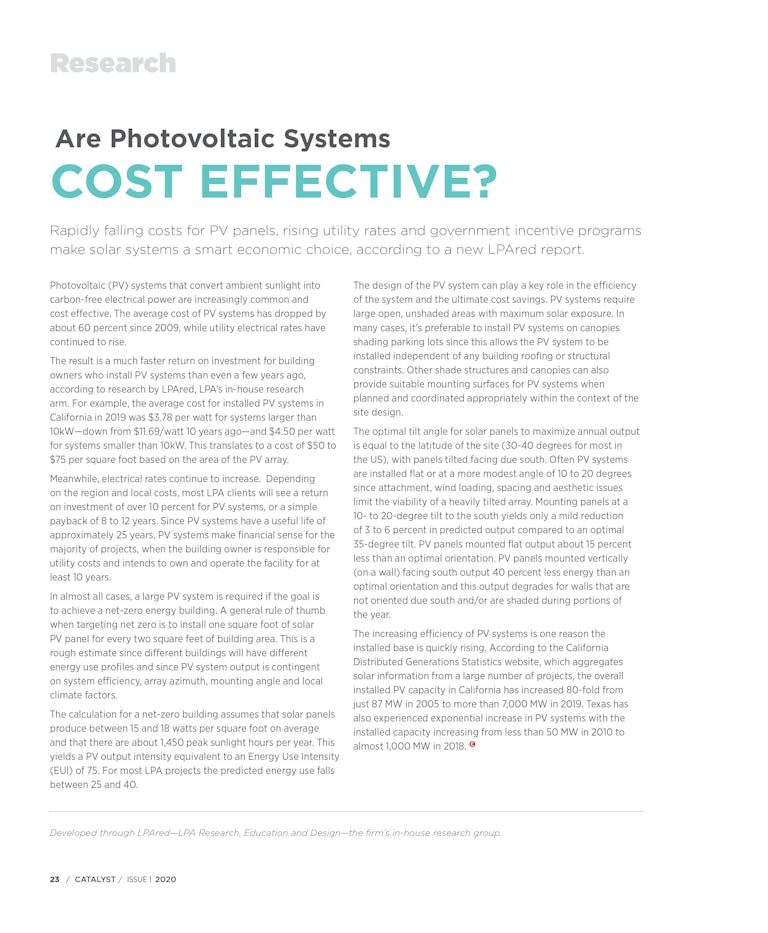Photovoltaic (PV) systems that convert ambient sunlight into carbon-free electrical power are increasingly common and cost effective. The average cost of PV systems has dropped by about 60 percent since 2009, while utility electrical rates have continued to rise.
The result is a much faster return on investment for building owners who install PV systems than even a few years ago, according to research by LPAred, LPA’s in-house research arm. For example, the average cost for installed PV systems in California in 2019 was $3.78 per watt for systems larger than 10kW—down from $11.69/watt 10 years ago—and $4.50 per watt for systems smaller than 10kW. This translates to a cost of $50 to $75 per square foot based on the area of the PV array.
Meanwhile, electrical rates continue to increase. Depending on the region and local costs, most LPA clients will see a return on investment of over 10 percent for PV systems, or a simple payback of 8 to 12 years. Since PV systems have a useful life of approximately 25 years, PV systems make financial sense for the majority of projects, when the building owner is responsible for utility costs and intends to own and operate the facility for at least 10 years.
In almost all cases, a large PV system is required if the goal is to achieve a net-zero energy building. A general rule of thumb when targeting net zero is to install one square foot of solar PV panel for every two square feet of building area. This is a rough estimate since different buildings will have different energy use profiles and since PV system output is contingent on system efficiency, array azimuth, mounting angle and local climate factors.
The calculation for a net-zero building assumes that solar panels produce between 15 and 18 watts per square foot on average and that there are about 1,450 peak sunlight hours per year. This yields a PV output intensity equivalent to an Energy Use Intensity (EUI) of 75. For most LPA projects the predicted energy use falls between 25 and 40.







